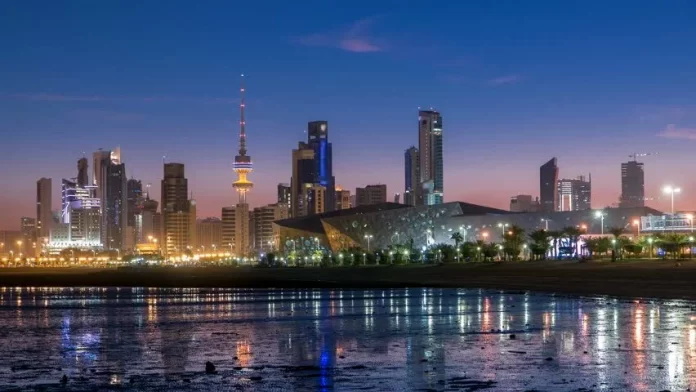BY HERMOINE MACURA-NOBLE
SPECIAL TO THE TIMES KUWAIT
Kuwait is planning to make the private sector a significant driver of economic activity and job creation in the recovery phase and beyond following the global pandemic, according to a new COVID-19 Recovery Roadmap produced by the global research firm Oxford Business Group (OBG) and the Kuwait Direct Investment Promotion Authority.
Jana Treeck, OBG’s Managing Director for the Middle East, said that while Kuwait felt the weight of falling oil prices and reduced production in 2020, the country’s high GDP per capita, sizeable sovereign wealth fund and low public debt levels provided useful buffers as the government moved to implement a raft of monetary and fiscal measures in response to the pandemic.
“GDP growth is expected to reach 0.7 percent in 2021, before accelerating to 3.2 percent in 2022, fuelled by strong public spending and credit growth, while higher oil prices and output levels both bode well for future growth,” explained Treeck.
Kuwait’s economy is characterised by several factors that helped it withstand the severe strains caused by the pandemic. Deep and productive oil fields had contributed to high GDP per capita and one of the world’s most significant sovereign wealth funds. The IMF estimates that Kuwait’s GDP contracted by 8.1 percent in 2020, mainly due to the economic effects of the COVID-19 pandemic, while public debt levels were the lowest in the GCC.
Reports reveal that Kuwait is the least indebted government in the GCC, with government debt measuring 11.6 percent of GDP as of end-2019. An estimated fiscal buffer of more than $692 billion in the Future Generations Fund (FGF), in theory, gives policymakers sufficient funds to galvanise a diversified, post-pandemic recovery.
Before the COVID-19 pandemic, Kuwait was the MENA region’s most improved economy in the World Economic Forum’s 2019 global competitiveness index, rising eight places to 46th overall and ranking first for macroeconomic stability. Kuwait Vision 2035 aims to build on this improvement and transform the country into a centre for finance and trade, led by a rejuvenated private sector, more public-private partnerships, and higher infrastructure spending.
Officially launched in 2017, the Kuwait Vision 2035 national development plan is a roadmap for reducing dependence on oil, a task made more urgent against the backdrop of global climate change. The plan has three primary goals: restore the regional leadership role of Kuwait as a financial and commercial centre while reviving the role of the private sector; reinvigorate national institutions to empower workers and improve productivity, and build new infrastructure and create a sustainable business environment. The roadmap seeks to reduce the government’s role in financing development projects from 90 percent to around 40 percent by galvanising private sector interest and employing more public-private partnerships.
Information-Communication-Technology (ICT) has been one of the significant drivers of inward foreign direct investment over the past five years, and the acceleration of corporate digital transformation and consumer acclimatisation bodes well for further growth. Experts say a digital shift is currently underway amongst consumers and across the corporate sector. This transformation process accelerated during the pandemic, paving the way for further expansion, especially in the start-up segment.
As financial technology (fintech) is viewed as a primary enabler of the economic transition, the banks have been the first to respond. The Central Bank of Kuwait has launched a regulatory sandbox framework encouraging companies and individuals to develop innovative payment services. The National Bank of Kuwait updated its legacy capital market system in 2019 as a digital transformation strategy. Kuwait International Bank is partnering with Mobiquity to become an all-digital Islamic bank. A decision by the central bank to extend COVID-19 relief measures to unlock additional liquidity and allow for greater flexibility on bank repayments should also facilitate an economic rebound.
Increasing Kuwaitis’ role in the labour force is another strategic goal that builds on existing policies to boost local participation in the private sector by 10 percent. With this in mind, before the pandemic, the authorities embarked on reforming national education curricula to align with industry needs.
Last but not least, tourism is also an area with exceptionally high growth potential. Domestic travel and tourism spending reached some $6.1 billion in 2020, up from $1.6 billion the previous year despite, or because of, the pandemic, with the family tourism segment growing rapidly.
 By Hermoine Macura-Noble
By Hermoine Macura-Noble
The first Australian English speaking News Anchor in the Middle East. She is also the Author of Faces of the Middle East and Founder of US-based 501c3 charity – The House of Rest which helps to ease the suffering of victims of war. For more from our Contributing Editor, you can follow her on Instagram, here.

















